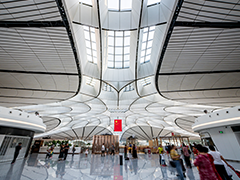The composition and application of the sound system
- Categories:Industry News
- Time of issue:2018-09-26 14:50
- Views:
(Summary description)The broadcasting and sound system covers a wide range, from shopping malls, schools, hotels, stations, terminals, squares to venues, theaters, stadiums, etc. are all closely related.
The composition and application of the sound system
(Summary description)The broadcasting and sound system covers a wide range, from shopping malls, schools, hotels, stations, terminals, squares to venues, theaters, stadiums, etc. are all closely related.
- Categories:Industry News
- Time of issue:2018-09-26 14:50
- Views:
The broadcasting and sound system covers a wide range, from shopping malls, schools, hotels, stations, terminals, squares to venues, theaters, stadiums, etc. are all closely related.
In civil engineering design, broadcasting systems can be divided into the following categories:
A. Public broadcasting systems for public areas (shopping malls, stations, terminals, shopping malls, restaurants, corridors, classrooms, etc.) and parking lots.
This type of system is mainly used for voice broadcasting, so clarity is paramount. Moreover, such systems often broadcast background music in peacetime, and can be converted to emergency broadcasts in the event of a disaster or emergency.
B. Public broadcasting of buildings facing hotel rooms.
Such systems include room audio broadcasts and emergency broadcasts, often delivered by bedside tables located in the guest rooms. The room broadcasts contain a number of freely selectable bands. In the case of emergency broadcasts, room broadcasts are automatically interrupted and automatically switched to emergency broadcasts.
C. Hall sound reinforcement system represented by auditorium, theater and gymnasium.
This is a professional sound reinforcement system, which not only considers the problem of electro-acoustic technology, but also the acoustics of public broadcasting in shopping malls. Both of them must be balanced and should not be neglected. Such broadcast systems often have comprehensive multi-purpose requirements, which can be used not only for the sound reinforcement of the venue language, but also for performances in the arts. For large-scale live sound systems, the electric power is low. Tens of thousands, more than tens of thousands of watts, it is necessary to use high-powered speakers and power amplifiers, in the system configuration and equipment selection have certain requirements, while paying attention to the load of the power line.
D. Broadcast audio system for conference rooms, lecture halls, etc.
Such systems are generally also systems that are set up for background music and emergency broadcasts provided by public broadcasts, but because of their particularity, conference broadcast systems are often set up separately in conference rooms and lecture halls. For higher requirements or international conference halls, special audiovisual systems such as simultaneous interpretation systems, conference voting systems, and large-screen projection televisions are also required.
As can be seen from the above, the broadcast audio systems for various buildings, hotels and other civil buildings can be basically classified into three types:
The first is the Public Address System (PA), which is a cable broadcast system, which includes background music and emergency broadcast functions. It is usually combined to play background music or other programs, and is converted into an alarm when there is an emergency such as a fire. broadcast. The microphone used for broadcasting in such a system is generally not in the same room as the speaker broadcasted to the public, so there is no problem of acoustic feedback, and the constant pressure transmission method is a typical system;
The second is the hall sound reinforcement system, which uses professional audio equipment and requires a high-powered speaker system and power amplifier. Since the microphone and the sound reinforcement speaker are in the same hall, there is a problem of acoustic feedback and even howling. And because of its short distance, the system generally uses a low-resistance direct transmission method;
The third is a dedicated conference system. Although it is also a sound reinforcement system, it has its special requirements, like a sound interpretation system.
Scan the QR code to read on your phone
Related News

OBT WeChat

OBT Mobile Website
Copyright © Shenzhen OBTPA Technology Co.,Ltd. 粤ICP备18028288号






